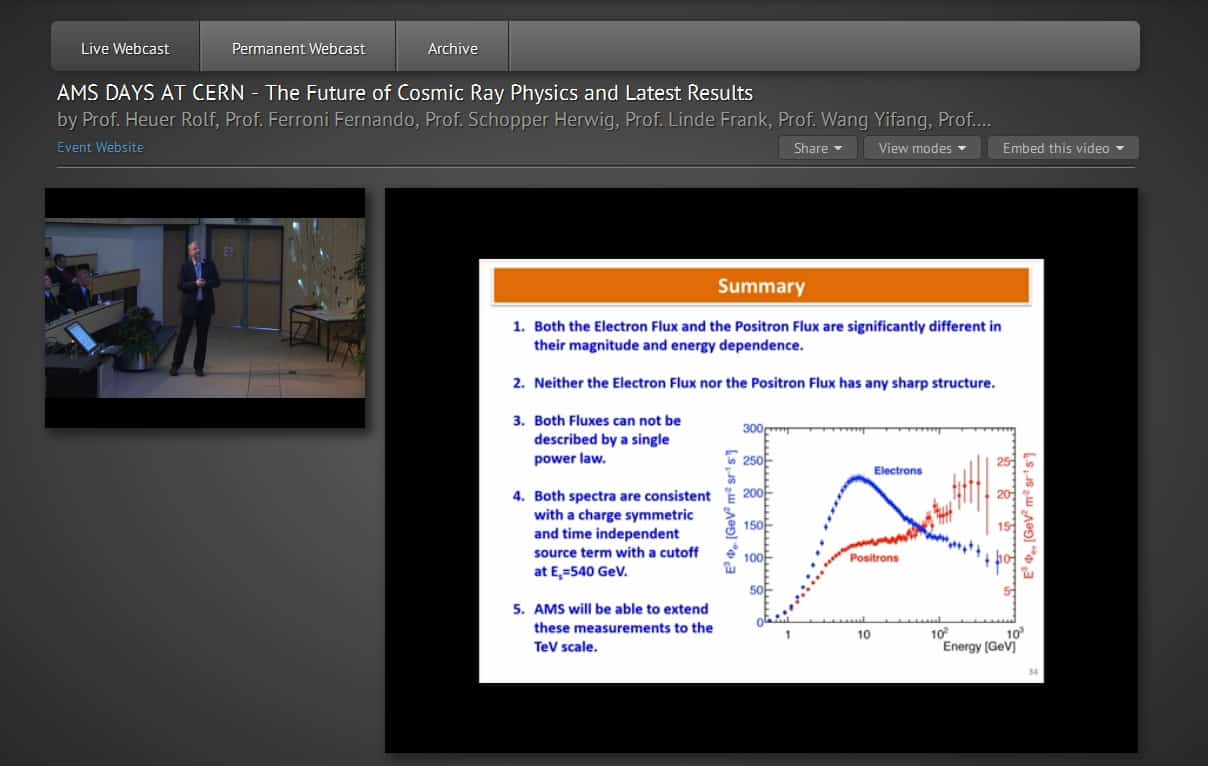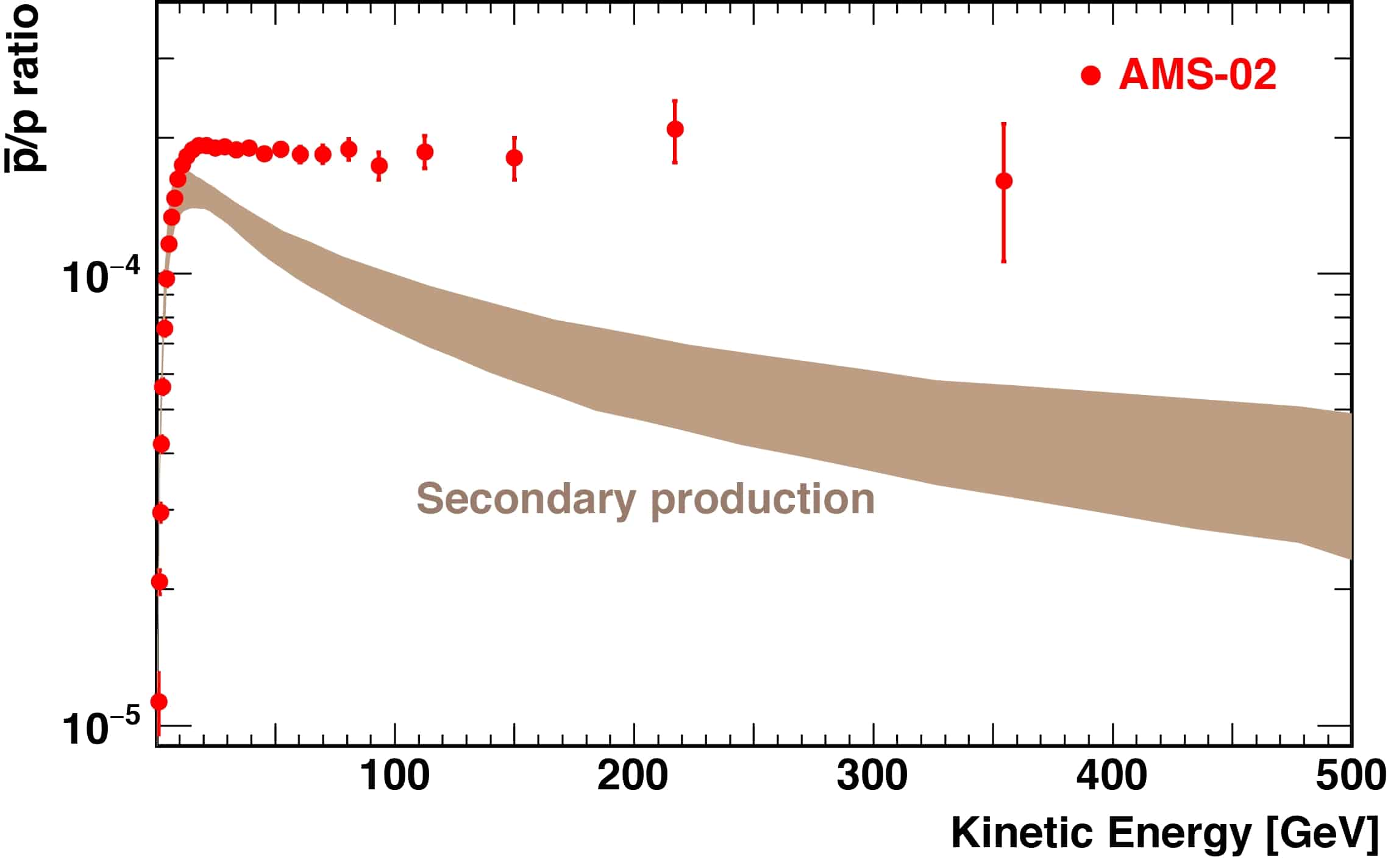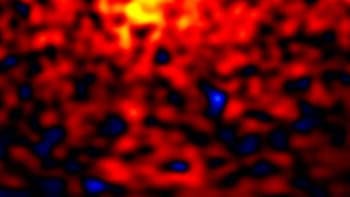
By Hamish Johnston
Cosmic rays, dark matter and other astrophysical mysteries are being debated with much vigour at a three-day conference that began this morning at CERN in Geneva. Called “AMS Days at CERN”, the meeting will include presentations of the latest results from the Alpha Magnetic Spectrometer (AMS).
Located on the International Space Station, the AMS measures the energy of high-energy charged particles from the cosmos – otherwise known as cosmic rays. These particles are of great interest because they offer us a window into some of the most violent processes in the universe. Some cosmic rays have probably been accelerated during supernova explosions while others could be produced as matter is sucked into the supermassive black holes that lie at the centres of many galaxies.
One intriguing possibility is that some cosmic rays are produced when hypothetical dark-matter particles decay. Indeed, thanks to measurements made by the AMS and the PAMELA space mission, we know that there are many more high-energy positron cosmic rays out there than predicted by conventional models of particle astrophysics. Some physicists argue that these extra positrons could be coming from the decay of dark matter – a mysterious substance that is invisible, yet has a profound effect on the structure of the cosmos through its gravitational pull. Others argue that the excess has a more mundane astrophysical origin.
This morning the AMS’s Stefan Schael gave an update on the AMS positron measurements and, as you can see in the screenshot above, the positron excess is alive and well up to about 500 GeV. Although the positron data (in red) have relatively large uncertainties, it does appear that the flux is beginning to tail off at the highest energies. This fall is expected to continue into the TeV energy regime and exactly how positron numbers drop off could tell physicists whether they were created by dark matter or by astrophysical processes. AMS physicists are still working on TeV-scale measurements so we shall have to wait and see if the dark-matter explanation holds up.

Another important clue could lie in AMS measurements made on protons and antiprotons, which also show an excess of antimatter particles at high energies. The figure above shows the antiproton excess as a ratio (in red) alongside what is expected from conventional particle astrophysics (in brown). While it is not clear whether high-energy antiprotons could be created by dark matter, understanding their origins could help us gain a better understanding of where the excess positrons are coming from.
Subir Sarkar of the University of Oxford has done a great deal of work on the origins of high-energy cosmic rays and he will be speaking at the conference tomorrow at 11:15 CEST. Sarkar is sceptical of the dark-matter explanation for the positron excess and has done calculations that suggest nearby supernova remnants accelerate high-energy protons, which interact with the ambient matter to make high-energy positrons.
You can watch the lectures live here over the next three days.



